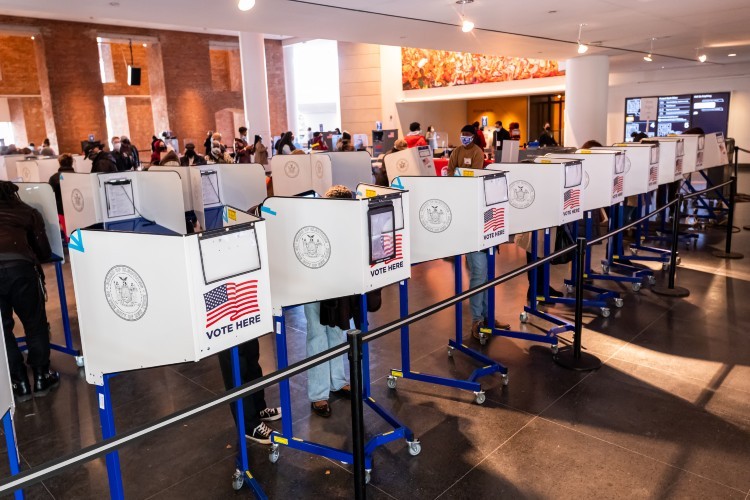On June 22, 2021, registered voters in the Democratic and Republican parties will participate in one of the most important primary elections in New York City’s history—with an entirely new voting system. These elections for mayor, comptroller, public advocate, borough presidents, and city council will be the city’s first major test of ranked-choice voting. Rather than voting for one candidate to win the party nomination, voters will rank up to five candidates on the ballot in order of preference.
Ranked-choice voting is not inherently complicated, but any change to the electoral process can confound and dispirit voters. To avoid confusion at the polls, here’s what you need to know.
How does ranked-choice voting work under New York City’s system?
Voters receive a ballot where they can rank up to five candidates in order of preference, instead of voting for just one candidate. You must choose different candidates for each rank. Voters can still vote for just one candidate for each office if they prefer. Ranking other candidates does not harm a voter’s first choice.
To determine the winner, all the first-choice votes for each candidate are added up. If one candidate receives more than 50 percent of the first-choice votes, they win the election outright. But if no candidate gets more than 50 percent of the first-choice votes, then counting continues in rounds. In each round, the candidate with the fewest votes is eliminated.
If your first-choice candidate is eliminated because that candidate had the fewest votes, your second-choice candidate moves up and counts as your vote in the next round. And if your second choice is then eliminated in the next round, your vote is transferred to your third choice, and so on. In other words, in each round, your vote will count once, and it will count for the highest-ranked candidate on your ballot who has not been eliminated, whether that’s your first choice or your fifth choice.
This round-by-round process continues until only two candidates remain. The candidate with the most votes in the final matchup wins the primary election.
Read the full article at Columbia News.

